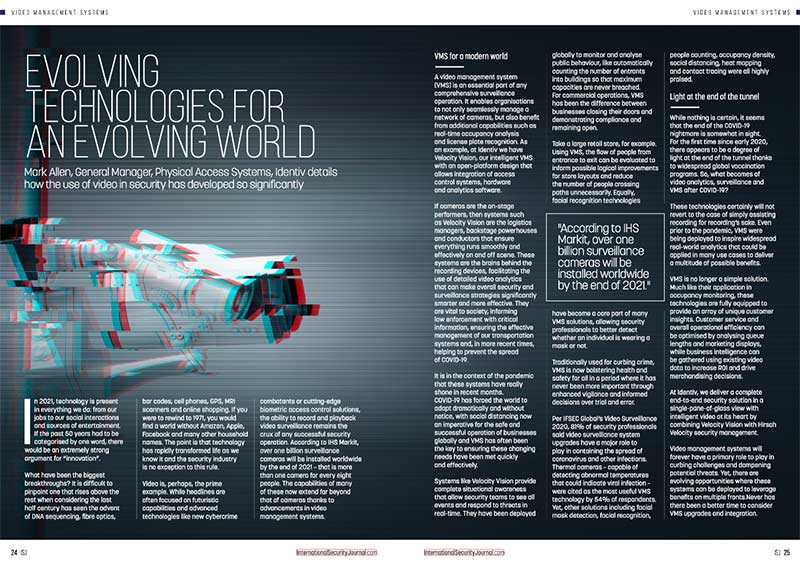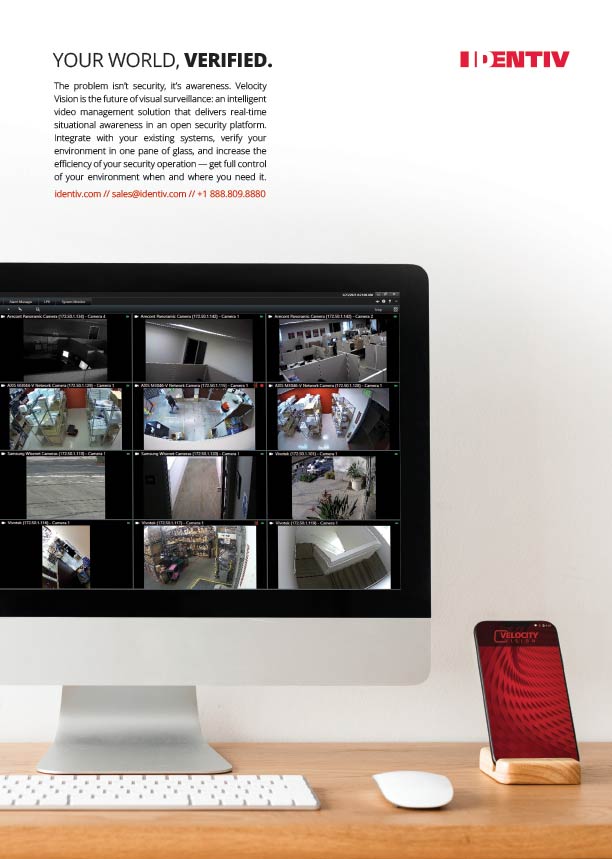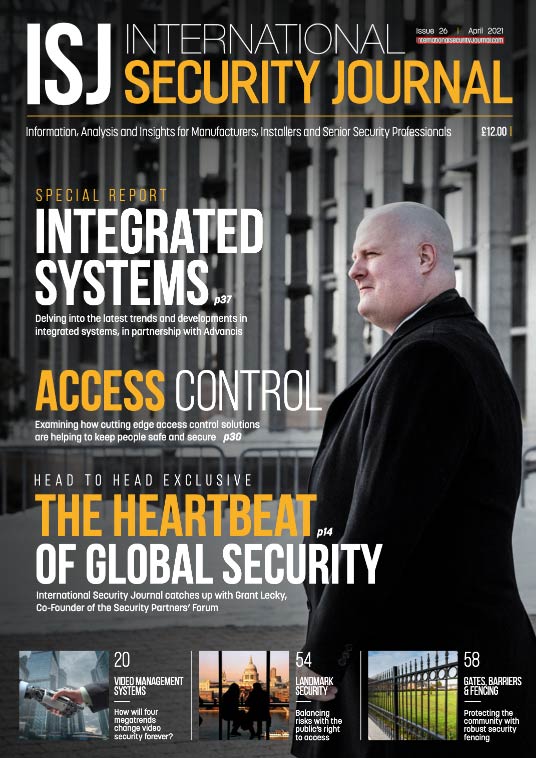International Security Journal: Evolving Technologies for an Evolving World
April 1, 2021
Mark Allen, General Manager, Physical Access Systems, Identiv details how the use of video in security has developed so significantly
This article was originally published by
International Security Journal (pp. 26 - 27).
 In 2021, technology is present in everything we do: from our jobs to our social interactions and sources of entertainment. If the past 50 years had to be categorized by one word, there would be an extremely strong argument for “innovation”.
In 2021, technology is present in everything we do: from our jobs to our social interactions and sources of entertainment. If the past 50 years had to be categorized by one word, there would be an extremely strong argument for “innovation”.
What have been the biggest breakthroughs? It is difficult to pinpoint one that rises above the rest when considering the last half century has seen the advent of DNA sequencing, fiber optics, bar codes, cell phones, GPS, MRI scanners, and online shopping. If you were to rewind to 1971, you would find a world without Amazon, Apple, Facebook, and many other household names. The point is that technology has rapidly transformed life as we know it, and the security industry is no exception to this rule.
Video is, perhaps, the prime example. While headlines are often focused on futuristic capabilities and advanced technologies like new cybercrime combatants or cutting-edge biometric access control solutions, the ability to record and playback video surveillance remains the crux of any successful security operation. According to IHS Markit, over one billion surveillance cameras will be installed worldwide by the end of 2021 – that is more than one camera for every eight people. The capabilities of many of these now extend far beyond that of cameras thanks to advancements in video management systems.

VMS for a modern world
A video management system (VMS) is an essential part of any comprehensive surveillance operation. It enables organizations to not only seamlessly manage a network of cameras, but also benefit from additional capabilities such as real-time occupancy analysis and license plate recognition. As an example, at Identiv we have Velocity Vision, our intelligent VMS with an open-platform design that allows integration of access control systems, hardware, and analytics software.
If cameras are the on-stage performers, then systems such as Velocity Vision are the logistics managers, backstage powerhouses and conductors that ensure everything runs smoothly and effectively on and off scene. These systems are the brains behind the recording devices, facilitating the use of detailed video analytics that can make overall security and surveillance strategies significantly smarter and more effective. They are vital to society, informing law enforcement with critical information, ensuring the effective management of our transportation systems and, in more recent times, helping to prevent the spread of COVID-19.
It is in the context of the pandemic that these systems have really shone in recent months. COVID-19 has forced the world to adapt dramatically and without notice, with social distancing now an imperative for the safe and successful operation of businesses globally, and VMS has often been the key to ensuring these changing needs have been met quickly and effectively.
Systems like Velocity Vision provide complete situational awareness that allow security teams to see all events and respond to threats in real-time. They have been deployed globally to monitor and analyze public behavior, like automatically counting the number of entrants into buildings so that maximum capacities are never breached. For commercial operations, VMS has been the difference between businesses closing their doors and demonstrating compliance and remaining open.
Take a large retail store, for example. Using VMS, the flow of people from entrance to exit can be evaluated to inform possible logical improvements for store layouts and reduce the number of people crossing paths unnecessarily. Equally, facial recognition technologies have become a core part of many VMS solutions, allowing security professionals to better detect whether an individual is wearing a mask or not.
Traditionally used for curbing crime, VMS is now bolstering health and safety for all in a period where it has never been more important through enhanced vigilance and informed decisions over trial and error.
Per IFSEC Global’s Video Surveillance 2020, 81% of security professionals said video surveillance system upgrades have a major role to play in containing the spread of coronavirus and other infections. Thermal cameras – capable of detecting abnormal temperatures that could indicate viral infection – were cited as the most useful VMS technology by 54% of respondents. Yet, other solutions including facial mask detection, facial recognition, people counting, occupancy density, social distancing, heat mapping, and contact tracing were all highly praised.
Light at the end of the tunnel
While nothing is certain, it seems that the end of the COVID-19 nightmare is somewhat in sight. For the first time since early 2020, there appears to be a degree of light at the end of the tunnel thanks to widespread global vaccination programs. So, what becomes of video analytics, surveillance, and VMS after COVID-19?
These technologies certainly will not revert to the case of simply assisting recording for recording’s sake. Even prior to the pandemic, VMS were being deployed to inspire widespread real-world analytics that could be applied in many use cases to deliver a multitude of possible benefits.
VMS is no longer a simple solution. Much like their application in occupancy monitoring, these technologies are fully equipped to provide an array of unique customer insights. Customer service and overall operational efficiency can be optimized by analyzing queue lengths and marketing displays, while business intelligence can be gathered using existing video data to increase ROI and drive merchandising decisions.
Security capabilities are transforming, too. At Identiv, we deliver a complete end-to-end security solution in a single-pane-of-glass view with intelligent video at its heart by combining Velocity Vision with Hirsch Velocity security management.
Video management systems will forever have a primary role to play in curbing challenges and dampening potential threats. Yet, there are vast and evolving opportunities where these systems can be deployed to leverage benefits on multiple fronts – health and safety, security, customer service, marketing, and more.
Never has there been a better time to consider VMS upgrades and integration.
